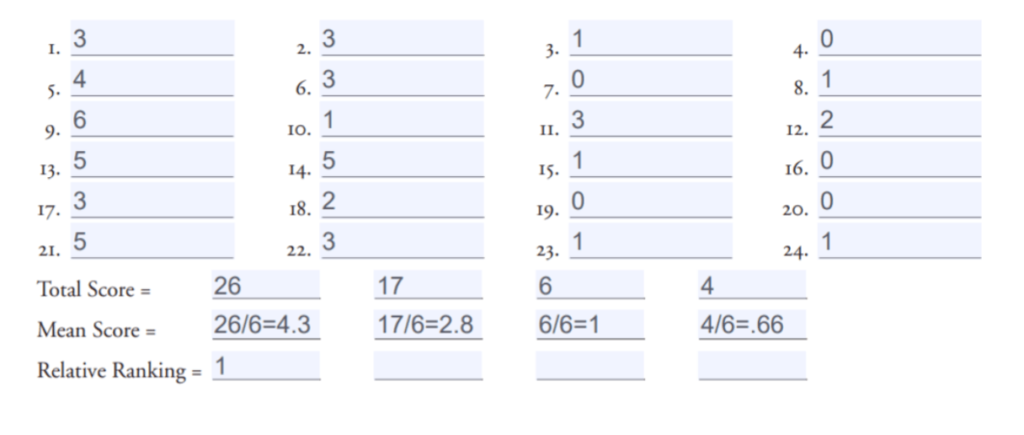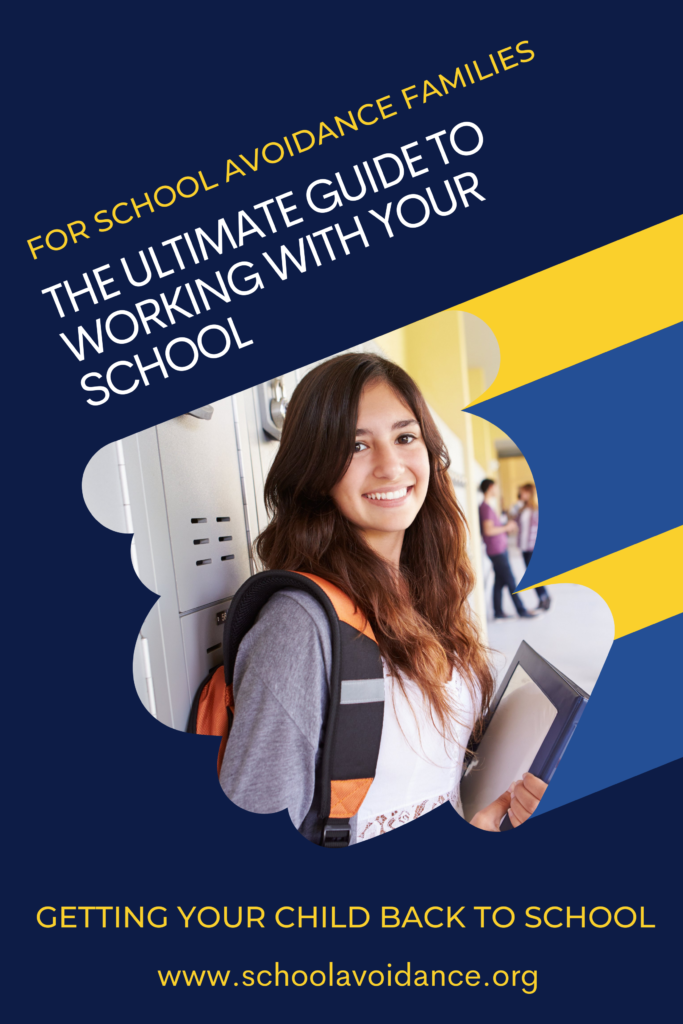If this is one of your first times seeking help for school avoidance, you are in a good position to help your child. We have exactly the right amount of information and resources on this website to assist you in helping your child.
You may have landed here because your child has been school avoidant for a bit, and you need more help.
We are going to help you by sharing evidence-based interventions and best practice strategies on this website.
We also offer our community support and tips in an understanding, non-judgmental environment and access to the leading voices in the school avoidance world.

School avoidance is when a child refuses to attend a school or has difficulty remaining in school the entire day.
It can start by missing a day or two sporadically over a few of your child’s school years and slowly increase to the point where you see it’s becoming a problem.
You may also have seen “soft signs” like avoiding a certain class, having serious problems with completing homework, faking illness to miss a day of school, miss a presentation or test at school.
School avoidant behavior can show as any of the following;
If you are online searching for school avoidance information, you most likely see signs that concern you. You don’t need academic definitions to tell you if your child meets the parameters of school avoidance.
If your child’s reluctance toward school is causing stress within your family or your daily life, then it would make sense to get help now.
When it comes to your kids, your instincts and gut feelings are usually right. So, listen to them. Try not to talk yourself out of these observations.
It’s not uncommon to avoid or deny an issue with your child, which could be scary and overwhelming.
We are here to help support you as you take action to help your child.
If you like data or it will help you, click below for academic and clinical definitions:
Kearny and Albano developed the four functions of School Refusal to help determine the underlying causes of a child’s school refusal and then use that information to determine a specific evidence-based treatment plan.
Dr. Kearny and Dr. Albano describe the four main reasons why children refuse school.
Examples:
The two reasons above are negative or aversive, representing things that cause feelings to escape or avoid.
Examples:
Examples:
The School Refusal Assessment Scale is a psychological assessment tool that Dr.Chris Kearney and Dr. Wendy K. Silverman created to assess what is causing (one or more of the functions noted above) the child’s school refusal to then best inform the proper interventions.
Dr. Kearny and Dr. Anne-Marie Albano developed the revised version (-R).
The SRAS-R will help establish the function of the child’s school refusal to help you, your mental health professional, and your school determines what course of action to take to help your child.
The SRAS-R will be of most value when you are first addressing a child’s school avoidance and are unsure if it’s caused by aversion to school or obtaining positive feelings from staying at home.
You’ll find the version for parents (as noted by the “P”) as well as the child version below:
Click the pages of the SRAS-R below for better viewing.
Scoring Example
In this example, since the mean score is highest (4.3 ) in column 1. The function with the highest mean score is considered the primary cause (function) of the child’s school avoidance.

School avoidance behavior is often associated with the following disorders, learning differences, and other factors, as noted below.
You may hear the terms comorbidity and co-occurring, which are similar, meaning having more than one disorder. For example, it is very common for kids with anxiety disorders also to have depression.
Also, there can be an undiagnosed learning difference that causes anxiety or depression.
For school avoidance, also note that there are usually co-occurring factors that are not a disorder.
But most likely other feelings brought on or exacerbated by a trigger (s) relating to the school. (for example, trouble starting papers, trouble translating the words in your head onto paper, or increased workloads, being called out by a teacher, the culture of performance, changes in friend groups, or their feelings and ability to relate to their friends
Anxiety-based school avoidance is a classic fight or flight response (also known as fight, flight freeze). Anxiety is normal, but it becomes problematic when our amygdala (part of the brain) misinterprets or magnifies a particular level of threat, keeps reinforcing it, which establishes it as a learned and valid response and transforms into anxiety pathways.
The signs are when you start seeing avoidant behaviors toward school or schoolwork for a week or two. It can be in the form of crying, tantrums, anger, distress, fear, or avoidance around homework or going to school.
Researchers and clinicians who are experienced in helping get school avoidant kids back to school all agree that evidence-based mode of therapy;
cognitive-behavioral therapy (CBT) and exposure therapy (ERP)
are the first-line treatments for school avoidance.
On our Types of Therapy/Modes of Therapy page, we also cover the value of dialectical therapy (DBT) and SPACE Treatment (new protocol out of YALE ).
It is hard to say this but important to note that no evidence supports just utilizing talk therapy for anxiety-based school avoidance without including proper exercises of CBT or ERP.
Disclaimer: This site is designed by School Avoidance Alliance to assist parents, family, friends, caregivers, educators, advocates, and other professionals involved with helping children and finding resources to understand, help and cope with school avoidance, as well as to increase public awareness regarding school avoidance. The contents of this website are presented for informational and educational purposes only. Nothing on this website is to be construed as professional advice on medical, legal, technical, or therapeutic matters. By accessing and using the information on this site, you agree to waive any rights to hold the site developer(s), or any individual and/or group associated with this site, liable for any damage that may result from the use of the information presented.
Researchers note the following:
Unfortunately only a small percentage of school professionals, therapists, educational advocates and policy makers understand school avoidance best practices. So, you must become the expert to ensure your child is getting:
The time passing slowly without progress is the worst feeling. It wouldn’t have taken five years of suffering and uncertainty if I had this expert guidance during my son’s school avoidance. We would have saved $29,000 in lawyer fees and $69,000 for private schools.
